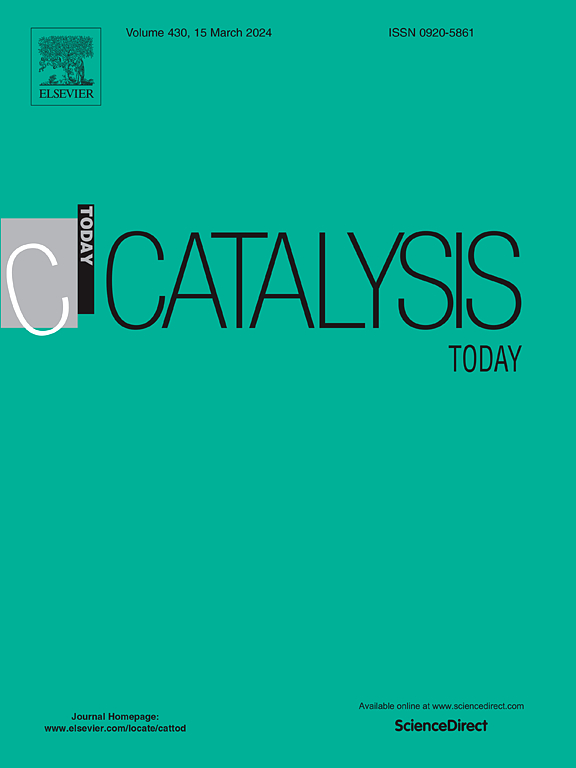Scaling relations for ammonia oxidation
IF 5.2
2区 化学
Q1 CHEMISTRY, APPLIED
引用次数: 0
Abstract
The ammonia oxidation reaction (AOR) is a reaction of great interest for its potential to upcycle ammonia waste, creating fertilizer salts beneficial for the agricultural industry. Currently, AOR catalysts typically suffer either from high onset potentials or catalyst poisoning, and better catalyst materials must be found in order for AOR to be viable for large-scale fertilizer production. Experimentally, it is difficult to study the interactions of adsorbates on catalyst surfaces on an atomic level, whereas computational studies provide us with a means to study catalysts on this scale. In this study, we use density functional theory (DFT) calculations to develop linear scaling relations for ammonia oxidation using a set of ten reference metals. The scaling relations were used in a microkinetic model to predict the most active transition metal electrocatalysts for the AOR.
求助全文
约1分钟内获得全文
求助全文
来源期刊

Catalysis Today
化学-工程:化工
CiteScore
11.50
自引率
3.80%
发文量
573
审稿时长
2.9 months
期刊介绍:
Catalysis Today focuses on the rapid publication of original invited papers devoted to currently important topics in catalysis and related subjects. The journal only publishes special issues (Proposing a Catalysis Today Special Issue), each of which is supervised by Guest Editors who recruit individual papers and oversee the peer review process. Catalysis Today offers researchers in the field of catalysis in-depth overviews of topical issues.
Both fundamental and applied aspects of catalysis are covered. Subjects such as catalysis of immobilized organometallic and biocatalytic systems are welcome. Subjects related to catalysis such as experimental techniques, adsorption, process technology, synthesis, in situ characterization, computational, theoretical modeling, imaging and others are included if there is a clear relationship to catalysis.
 求助内容:
求助内容: 应助结果提醒方式:
应助结果提醒方式:


